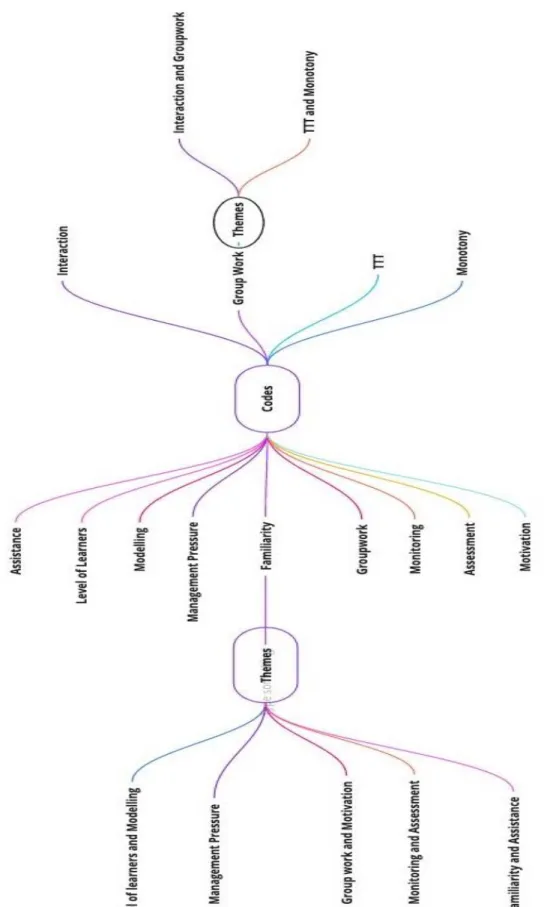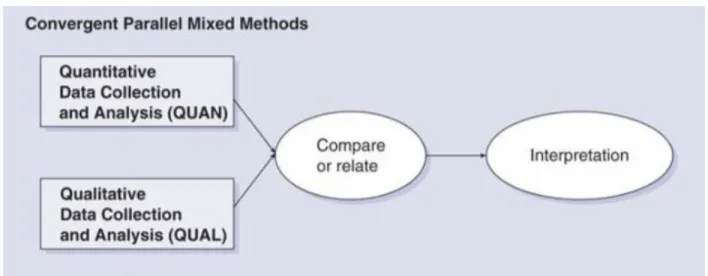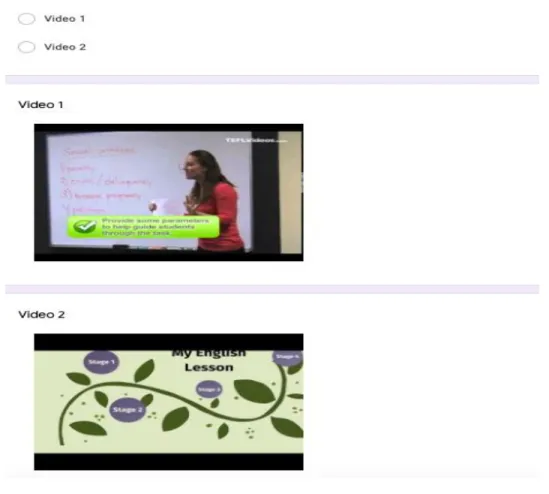The author, whose copyright is indicated on the title page of the work, has granted the British University in Dubai the right to lend his research work to users of its library and to make partial or single copies for educational and research use. The author has also granted permission to the University to retain or make a digital copy for similar use and for the purposes of digital preservation of the work.
Introduction
Background of the study
Its combination with education is indeed incoherent, which in turn provides opportunities and opens new avenues for the dissemination of knowledge, of which "Online Education" (OE) is just one of the many results. OE is one of the technology-mediated forms of learning and is also used synonymously with "Distance Education", "Distance Education" or "Online Learning".
Rationale
Moreover, not only educational approaches and methodologies have emerged, but the technology industry has also grown in the past two decades, paving its way. As this pandemic has changed the face of today's education system, the consequences are visible in the form of a blended learning program or fully synchronous online learning.
Literature Review
TBLT
- Historical Background
- Theoretical Framework
- Definition of TBLT and Tasks
- Framework of a TBLT Lesson
- Technology-Mediated TBLT
- Literature that supports TBLT
- Literature against TBLT
- Neutral Perspective
- Historical Background
- Theoretical Framework
- Defining PPP and Lesson Framework
- Literature that supports PPP
- Literature against PPP
- Neutral Perspective
The output in the output hypothesis is nothing but the language produced by the learners (written or spoken) which is considered not only the acquired knowledge, but also an indication of ongoing learning (Swain, 2005). Practice stage is also controlled by the teacher where he/she checks learners' understanding by engaging them in activities that concentrate on TL introduced in the first phase.
Online Learning (OL) .1 Definition
- History and Growth of OL
- Theoretical Framework
- Types of OL
- Literature that supports OL
- Literature against OL
- Neutral Perspective
The final stage is "intellectual convergence," where there is a consensus of ideas in the form of a collaborative class assignment or essay. Bidlake (2009) argued that automated feedback in an online language course called Rosetta Stone would not provide any explanation for incorrect answers, as the LMS does not have interactive features.
Conclusion
Methodology
- Research Questions
- Sampling
- Research Methodology and Paradigm
- Research Instruments
- Survey
- Interview
- Validity and Reliability
- Validity and Reliability of Interview Data
- Reliability and Validity of Survey Data
- Pilot Survey and Interview
- Data Analysis
- Quantitative Data
- Qualitative Data
- Mixed Method Data Analysis
- Ethical Consideration
The first step is to identify the reason and rationale for the research, which becomes the purpose of conducting the survey and which we discussed in section 1.0. In addition, bias arises from characteristics of the interviewer and the respondent and from the wording of the questions (Cohen et al., 2004). Mean and standard deviation were calculated and used to interpret the final result of the survey.
Therefore, since the research design of this study is mixed method, it is imperative to analyze both quantitative and qualitative data in parallel and establish a connection between them before reaching the final interpretation of the study, which is also known as "convergent parallel mixed methods". ” (Creswell, 2014).

Findings 4.1 Introduction
Response Rate
This was followed by the number of responses and the response rate (RR) for the student and teacher survey. As shown in the table above, the response rate was higher for PPP than TBLT for both students and teachers, where 62.22% of students chose PPP as a teaching methodology in their online classroom, while the response rate for TBLT was 37 .77%.
Quantitative Findings
- Motivation
- Task
- TTT vs STT
- Achievement
- Groupwork
- Feedback
- Preference
- Role of a teacher
- Classroom Management
- Benefits/ Drawbacks
Q11 and Q12 present teachers' personal perception regarding preference to switch to any other teaching methodology than the one they already use. Findings for RQ2: What are the teachers' perceptions of the methodology used in an online classroom. The purpose of Q2, Q5, Q6, 10 was to analyze the role of a teacher for the virtual classroom where Q2 represents the role of a teacher as a facilitator and Q5 is about the teachers' role to provide input.
Q13 revolves around teachers' views on students being comfortable with PPP as they are already used to the sequence of lessons, while Q14 indicates teachers' perceptions of the student-centeredness of online lessons.

Qualitative Findings
- Findings for RQ3: Which methodology is preferred by learners in an online classroom?
- Findings for RQ1: What are the learners’ perceptions of the methodology used in an online classroom?
- Findings for RQ4: Which methodology is preferred by teachers in an online classroom?
- Findings for RQ2: What are the teachers’ perceptions of the methodology used in an online classroom?
- Thematic Analysis
- Generated Themes
Next, the students were asked the third question, which is related to the students' perception of the benefits of the method used in the online classroom. Q1 has a connection with Q2, which is to identify teachers' preference for the methodology they use in their online classroom. Interview Question 4 What suggestions do you have for further improving the teaching method used in online classrooms.
All responses to the four interview questions were carefully read, coded, and then categorized into potential themes from the teacher and student interviews.
Discussion 5 Introduction
Qualitative Analysis of Learners’ Data
- Interaction and Group work
- TTT and Monotony
Students also consider group work as a priority for online classrooms, as all 4 interviewees agreed that it is one of the ways to enhance learning in an online space. Responses from the students showed that one of the disadvantages of the online lessons was the higher number of TTT. CLT encourages communication through the participation of learners in groups or pairs, which promotes the process of language acquisition.
Conversely, the learners reported that their online classroom experience was the opposite where TTT appeared to be greater than STT.
Qualitative Analysis of Teachers’ Data
- Level of Learners and Modelling
- Pressure from the Administration
- Familiarity and Assistance
- Groupwork and Motivation
- Monitoring and Assessment
However, one of the teachers sharply indicated that she would also like to try TBLT in her online class if the administration allows it. 2 out of 4 teachers said that both students and teachers were well-attuned to the PPP lessons, while one of the teachers who used TBLT in the classroom also preferred to use it for the online class to provide a similar reason. One of the teachers said that dividing students into groups increased students' motivation level, which is similar to experiential learning theory, and also helped the teacher by allowing differentiation in the online classroom.
Conversely, two teachers volunteered, although they wanted to take advantage of the benefits of group work but were unable to do so due to the limitations of the LMS.
Quantitative Analysis of Learners’ Data
- Motivation
- Tasks
- TTT vs STT
- Achievement
- Groupwork
- Feedback
Teachers also viewed assessment as an important feature of virtual classrooms to check students' understanding of what some teachers can and others can't handle. Adair-Hauck (2000) reported that technology-enhanced language learning also reduces affective filters in language classes, as students feel less pressured in the absence of peers and teachers. 2011) studied the use of the Internet in language classrooms and claimed that it enhanced student autonomy and aroused eagerness and created a positive image in the classroom. Regarding Q8, students' beliefs showed a tendency towards TTT connection with grammar and vocabulary statement as the mean value was higher and the SD was lower.
The mean for Q17 is higher and the SD is lower than Q16, which represents students' views on feeling confident by the end of the online class.
Quantitative Analysis of Teachers’ Data
- Preferences
- Role of a teacher
- Classroom Management
- Benefits/Drawbacks
However, a difference in mean and SD values was observed for Q6 between PPP and TBLT scores which are higher and lower, respectively, for PPP than TBLT. However, for both the PPP and the TBLT, the mean values and SD indicated a disagreement with the teacher's ability to monitor. Mean and SD scores for TBLT Q3, Q13, Q16 revealed a bias towards a somewhat positive response for both TBLT and PPP, while Q14 showed a neutral response for both teaching methods.
Both methodologies are generally associated with student-centered learning approaches, but TBLT is recognized as more student-centered than PPP (Harmer, 2008; Swan, 2005), which is also reflected in the mean and SD scores, although not drastically.
Mixed-Method Analysis
- MM Analysis of Learners’ Data
- MM Analysis of Teachers’ Data
The result of the teachers' survey revealed their perception as well as preference for teaching methods for their online classes. TBLT teachers also find that their online classes are more student-centered, and they also see the online method as similar. In addition, the qualitative findings revealed the themes; Level of students and modeling, pressure from the administration and confidentiality and assistance, which were the reasons given by teachers for their preference for the online method.
Therefore, it can be inferred from the MM findings that the results coincide and teachers have a neutral to positive perception along with a mixed preference for online teaching methodology.
Conclusion
The teachers were of the opinion that the choice of methodology was rooted in the level of the students, as they found PPP suitable for lower levels because it allowed them to use teaching strategies such as modeling which helped the students, while TBLT seemed suitable for higher intermediate levels as tasks became more challenging and fun. Finally, if the teachers' quantitative and qualitative data are examined side by side, it can be seen that the preference construct emerged during the thematic analysis phase and that the reasons for the teachers' preferences were discussed within the themes. The aim of the study was to find out how Emirati students and teachers perceive the important teaching method they use in their online classes in the context of a higher education institution.
However, the teachers' quantitative data revealed neutral perceptions of both TBLT and PPP, and also revealed mixed preferences for the mentioned teaching methodologies for reasons such as student level, administrative pressure, familiarity and assistance.
Implications
It is also one of the urgent needs to understand online teaching methods as it has become the only way to continue learning in the midst of a pandemic. First, learners watched the videos at the beginning of the recording to determine which methodology they replicated in their online class. Thus, it is not a question of which teaching methodology, but rather observable demands from the learners to transform both TBLT and PPP online classes to become more student-centered.
Second, to implement the first course of actions, it is mandatory for the HEI to provide the teachers with required training that will educate them about different features of the LBS and what it takes to teach in an online classroom.
Limitations
Rethinking task design for the digital age: A framework for language teaching and learning in a synchronous online environment. A study on the application of task-based language teaching method in a comprehensive English class in China. REVISITING THE IMPLEMENTATION OF TASK-BASED LANGUAGE TEACHING (TBLT) IN INDONESIAN SECONDARY SCHOOL: CURRENT ISSUES AND OPPORTUNITIES.
A new look at the implementation of task-based language teaching (TBLT) in Indonesian secondary school: current problems and opportunities. Presentation-practice-production and task-based learning in the light of second language learning theories. The role of students' attitudes and motivation in learning a second language in online language courses.
SURVEY CONSENT FORM
INTERVIEW CONSENT FORM
TBLT Questionnaire (Teachers)

